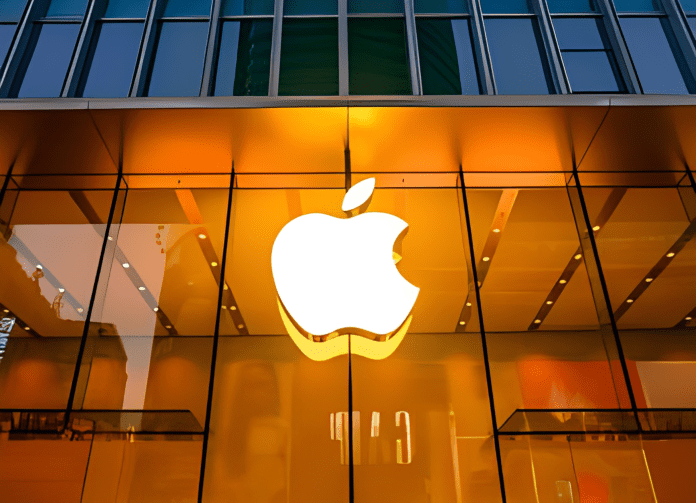According to a report published on Thursday, Apple predicted a decline in iPhone sales and set its overall revenue target at $6 billion below what Wall Street had anticipated. It is because of the blow in China’s Business. Apple’s stock fell 3% after hours, overshadowing the company’s strong first-quarter sales and profit, driven by iPhone growth, which exceeded analysts’ expectations.
The findings supported some analysts’ worries that the company’s flagship product is losing ground in the important Asian market to foldable phones and Huawei phones with chips built in China.
In an interview with Reuters, Apple CEO Tim Cook stated that the world’s most competitive smartphone market is still China. When taking into consideration currency exchange rates, he claimed that iPhone sales there decreased by “mid-single digits” in the December quarter.
As we all know, Apple does not currently have a foldable device. According to IDC analyst Nabila Popal, Apple is facing additional competitive pressures in China not only from Huawei but also from foldables, a very popular and rapidly expanding market in China.
LSEG data shows that Apple’s sales in China for the December quarter came in at $20.82 billion, below analyst projections of $23.53 billion.
Apple Chief Financial Officer Luca Maestri said analysts on a conference call that the company’s revenue for the current quarter will be at least $5 billion lower than it was a year ago when it sold iPhones quickly to refill supplies taken down by COVID-related production shutdowns.
According to Maestri’s remarks, revenue for the fiscal second quarter, which concludes in March, is expected to be over $90 billion, with iPhone sales estimated at roughly $46 billion. Wall Street projected iPhone sales of $50 billion and revenue of approximately $96 billion. They came to $51 billion in the quarter of 2023. That would make it the worst iPhone sales quarter for the company’s financial second quarter since across-the-board COVID lockdowns in March 2020.
Ben Bajarin, CEO of research firm Creative Strategies, explained that China would be the drag, and it is entirely due to their seasonality and extended replacement cycle.
Whatever occurs, I would be more concerned about (a decline in) year-over-year iPhone sales than a quarter.
Apple reported sales of $119.58 billion and profit of $2.18 per share for its fiscal first quarter, which concluded on December 30. These figures were higher than the $117.91 billion and $2.10 per share predicted by analysts.
IPhone sales for the quarter totaled $69.70 billion, up 6% from the expert forecast of $67.82 billion. It was due to the success of the company’s iPhone 15 lineup, which includes handsets that can record three-dimensional video for the Vision Pro headset announced this week. Apple now has 2.2 billion installed devices worldwide, up from 2 billion the previous year.
According to Cook, they have robust double-digit growth on the iPhone in emerging nations outside of China.
Amazing Possibility
While Apple’s results were disappointing, the share prices of two other digital giants, Meta Platforms, the owners of Facebook and Amazon, saw increases on Thursday when they released their quarterly results.
With investors believing Apple was trailing behind other tech giants in the AI race, Microsoft overtook Apple as the most valuable business in the world in January.
Though Cook stated on the conference call on Thursday that there was “a lot of work going on internally” and that generative AI was a “huge opportunity,” Apple has rarely acknowledged the technology in public until later this year.
Apple’s revenues in Asia, excluding China and Japan, exceeded expert projections by $10.16 billion. Cook claimed that South Korea, the home of Samsung Electronics, a longtime adversary, saw an all-time high in iPhone sales.
During the first quarter of its fiscal year, Apple’s services division—which encompasses the App Store, iCloud storage, Apple TV+, and music—saw the largest gain, with sales rising 11% to $23.12 billion, somewhat less than predicted by analysts.
Another obstacle for Apple’s App Store is in Europe, where a new regulation that goes into effect in March will let developers install other app shops on iPhones instead of paying Apple fees.
Apple’s Mac sales for the first quarter increased a little to $7.78 billion, matching analyst projections. iPad sales fell 25% to $7.02 billion, just shy of Wall Street’s projection.
Sales of Apple’s wearables business, which includes the AirPods and Apple Watch, dropped to $11.95 billion following corporate warnings of sluggish demand—just enough to exceed analysts’ projections.
Although experts do not anticipate it to generate significant revenue for several years, the company’s Vision Pro headset will be included in the division in upcoming quarters.
To comply with court orders and continue selling the watches, Apple temporarily deleted the blood-oxygen monitoring capability from several Apple Watch models that were at the center of a legal battle with Masimo, a manufacturer of medical products.



![500+ Apple Logo Pictures [HD] | Download Free Images on Unsplash](https://images.unsplash.com/photo-1621768216002-5ac171876625?q=80&w=1000&auto=format&fit=crop&ixlib=rb-4.0.3&ixid=M3wxMjA3fDB8MHxzZWFyY2h8NHx8YXBwbGUlMjBsb2dvfGVufDB8fDB8fHww)

